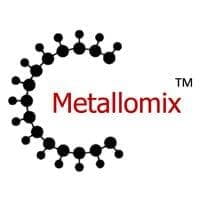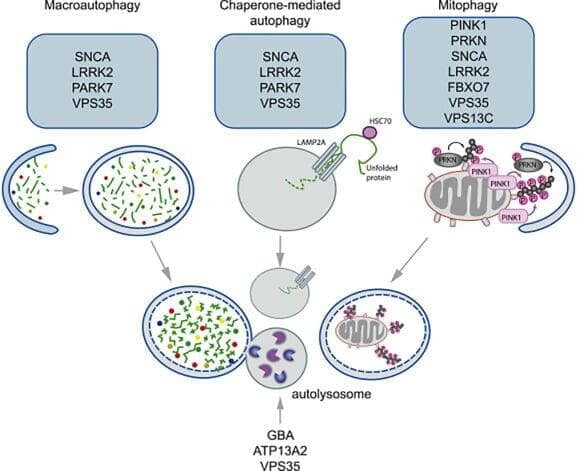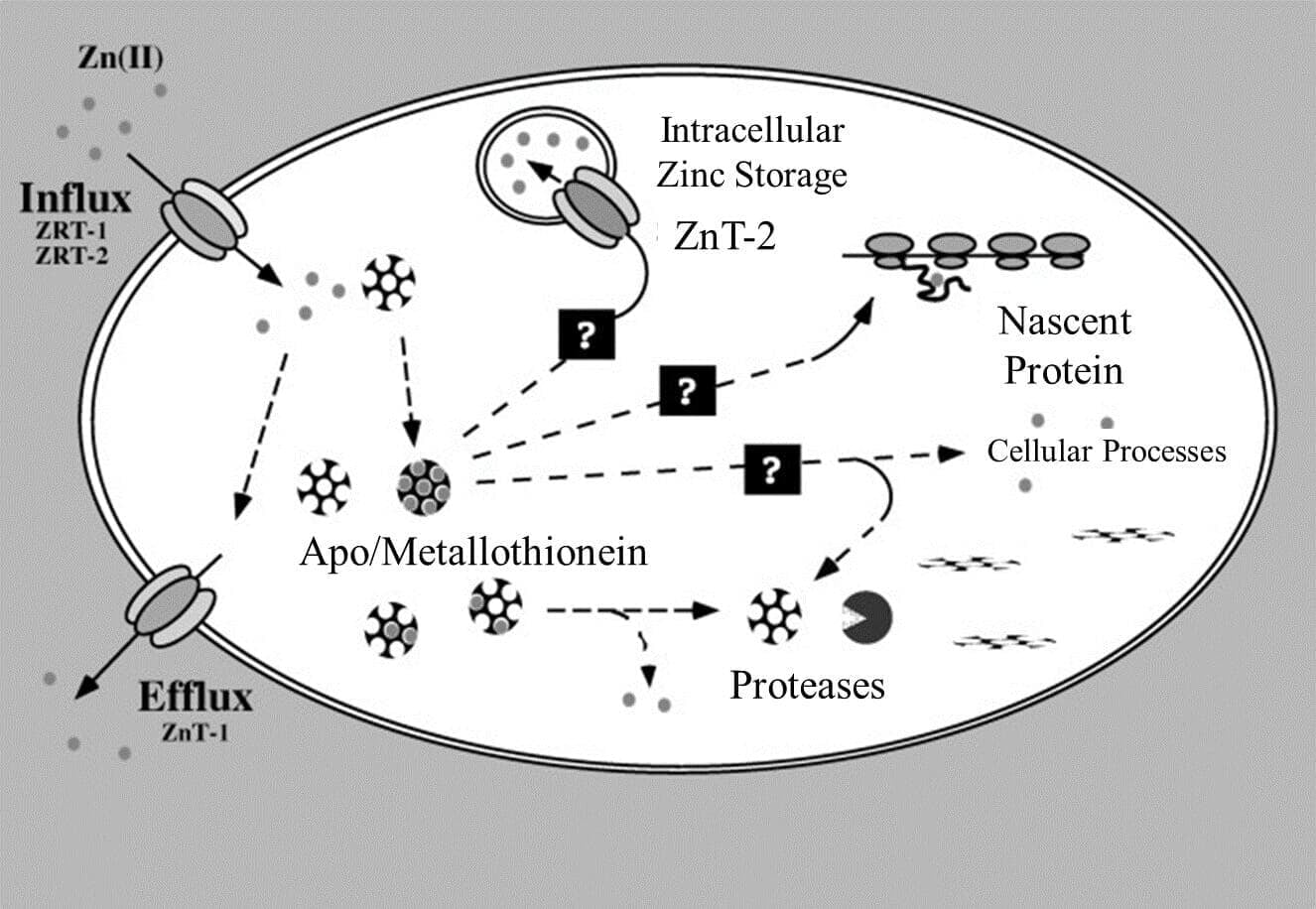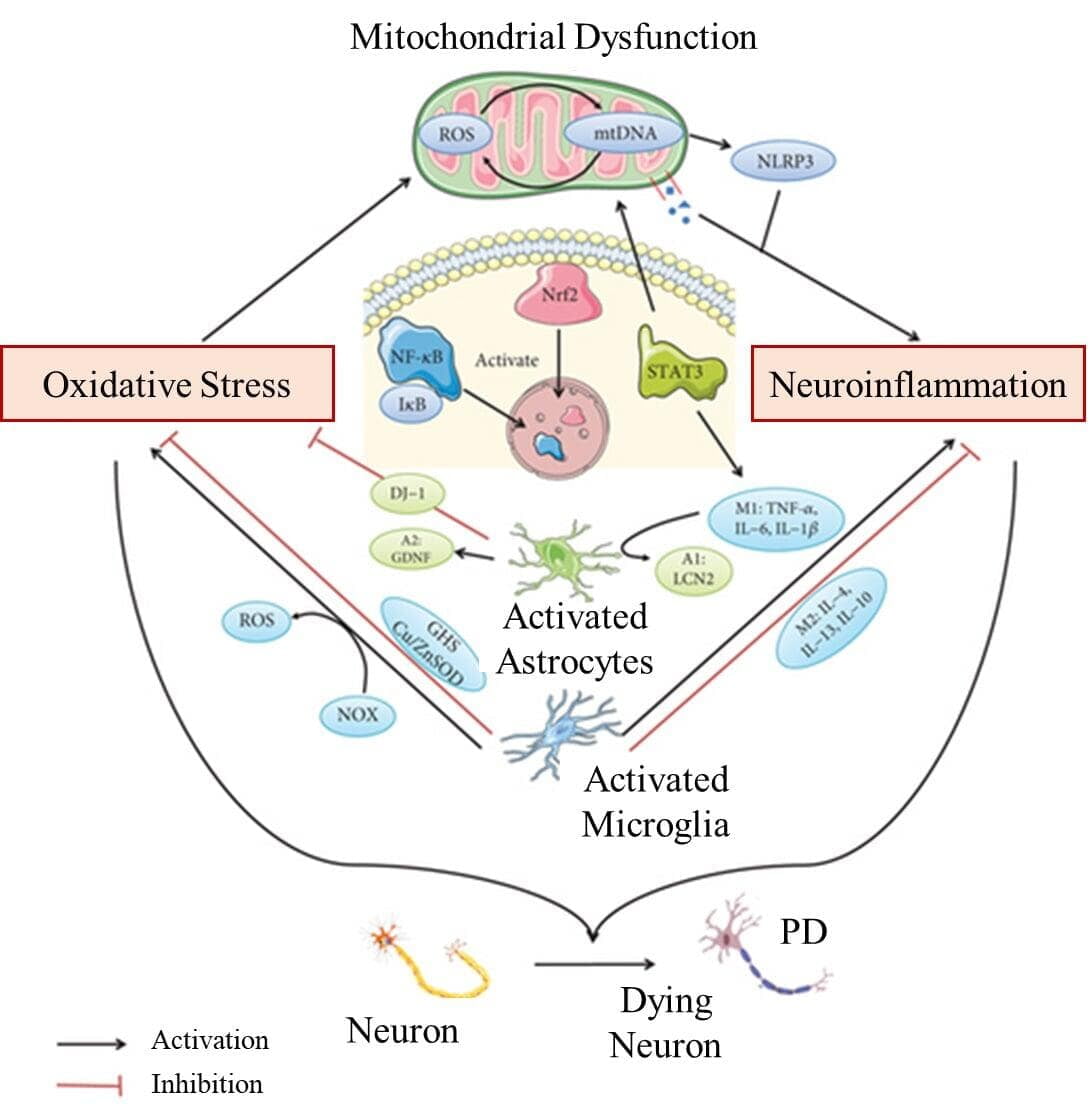
Oxidative stress and neuroinflammation potentiate each other to promote progression of dopamine neurodegeneration
Oxidative stress and neuroinflammation potentiate each other to promote progression of dopamine neurodegeneration
Progressive loss of dopamine (DA) neurons in midbrain substantia nigra is considered to be the main cause of PD. The hallmark of PD pathology is the formation of Lewy bodies and the aggregation of α-synuclein (α-syn). Recently, oxidative stress and neuroinflammation have received extensive attention as two important entry points in the pathogenesis of PD. The occurrence of oxidative stress and neuroinflammation is usually derived from external influences or changes in internal environment, such as the accumulation of reactive oxygen species, exposure to a toxic environment, and the transformation of systemic inflammation.

Both, deficiencies and excesses of certain metals can negatively impact mitochondrial function in PD
Both, deficiencies and excesses of certain metals can negatively impact mitochondrial function in PD
The relationship between metallome imbalances and mitochondrial dysfunction in Parkinson's disease (PD) is complex and bidirectional. Both deficiencies and excesses of essential elements can negatively impact mitochondrial function in PD. This bidirectional relationship highlights the complexity of PD pathogenesis.
Zinc is involved in regulating key mitochondrial energy processes, including glycolysis, the tricarboxylic acid (TCA) cycle, and the electron transport chain (ETC)Both zinc deficiency and excess can negatively impact mitochondrial processes, making the proper zinc homeostasis a crucial factor for normal mitochondrial function. Dysregulated zinc levels can impair T helper cell functions and regulation, contributing to neuroinflammation, are associated with increased risk of levodopa-induced dyskinesia.
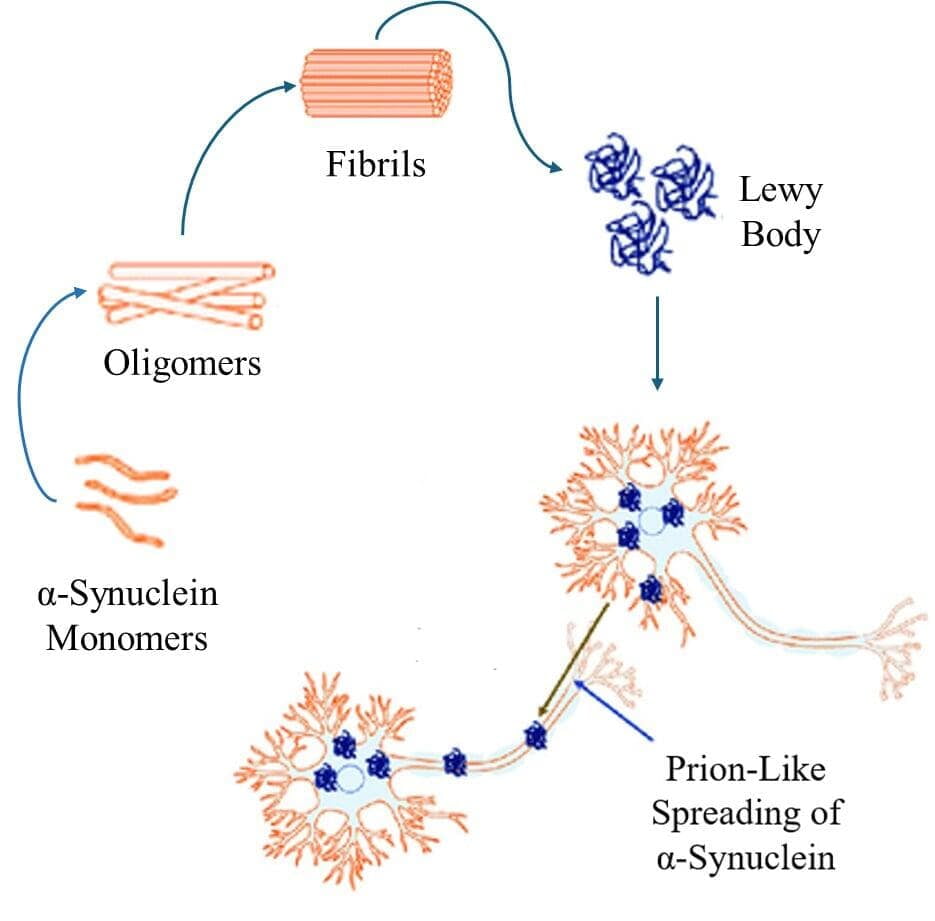
Pathogenic protein aggregation is the hallmark effect in Parkinson's disease
Pathogenic protein aggregation is the hallmark effect in Parkinson's disease
Both deficiencies and excesses of essential elements can negatively impact mitochondrial function in PD. This bidirectional relationship highlights the complexity of PD pathogenesis.
Zinc ions directly interact with α-synuclein, influencing its structure and propensity to aggregate. This interaction can either promote or prevent the aggregation depending on several conditions and the presence of other proteins such as human serum albumin (HSA). Several studies provided atomic-level details of Zinc binding to α-synuclein under physiological conditions, revealing that zinc enhances the anti-aggregation chaperoning role of HSA by protecting the hydrophobic N-terminal and NAC regions of α-synuclein (ref.) At the same time, other studies show that Zinc ions have been shown to accelerate the formation of α-synuclein fibrils, which are key components of Lewy bodies in PD (ref.) We believe the isotopic effect plays an integral role in the misfolding and aggregation of α-syn, hence playing an integral role in PD pathology.
The role of dopamine metabolism in Parkinson's disease (PD) is complex and multifaceted
The role of dopamine metabolism in Parkinson's disease (PD) is complex and multifaceted
The dopamine deficiency causes the primary motor symptoms of PD, including tremor, rigidity, and bradykinesia. Dopamine levels are controlled by synthesis, storage in vesicles, release, reuptake by dopamine transporters (DAT), and breakdown by enzymes. Tyrosine hydroxylase (TH) is the rate-limiting enzyme in dopamine synthesis, converting tyrosine to L-DOPA. TH activity is tightly regulated through protein-protein interactions, among other processes.
Zinc plays a crucial role in dopamine metabolism by influencing its synthesis, neurotransmission, and the overall function of dopaminergic neurons. The balance of zinc is critical, as both deficiency and excess can contribute to neurological disorders. Understanding zinc's role in dopamine metabolism could lead to new therapeutic strategies for disorders involving dopamine dysregulation, such as PD, LBD, ADHD, and drug addiction.
Dysregulation of autophagy results in the accumulation of abnormal proteins and damaged organelles in PD
Dysregulation of autophagy results in the accumulation of abnormal proteins and damaged organelles in PD
Autophagy is a highly conserved cellular process essential for the degradation and recycling of cytoplasmic components, including damaged organelles and misfolded proteins. It plays a crucial role in maintaining cellular homeostasis and responding to stress conditions.
Studies show that zinc can activate autophagy in neural cells by inducing significant increase in autolysosomes rather than autophagosomes, suggesting that zinc activates rather than inhibits autophagy. The PARK9 (ATP13A2) gene, associated with early-onset PD, is involved in zinc homeostasis. Loss of ATP13A2 function causes zinc imbalance, leading to lysosomal impairment. Proper zinc homeostasis helps to regulate autophagy and lysosomal function, hence contributing to the disposal of aggregated α-synuclein in PD.
Metal-binding proteins play a critical role in maintaining cellular homeostasis in the brain.
Dysfunction of metal-binding proteins can contribute to PD pathology through various mechanisms, including promoting α-synuclein aggregation, increasing oxidative stress, and disrupting cellular processes. Understanding and targeting these proteins and their interactions with metals offers promising avenues for developing new therapeutic strategies for PD. Upregulation of metallothioneins (e.g., by dexamethasone) has shown neuroprotective effects in animal models of PD.
Zinc is a potent inducer of MT gene expression. Zinc treatments trigger the upregulation of MT genes through the metal-responsive transcription factor-1 (MTF-1). MTs act as intracellular zinc buffers, binding and releasing zinc to maintain proper cellular zinc homeostasis. This is particularly important in PD, where zinc dyshomeostasis is implicated in disease pathology. Zinc-thiolate clusters in MTs are redox-active. MTs can scavenge reactive oxygen species (ROS) and bind excess metals, potentially mitigating neuronal damage in PD.
Metal homeostasis is crucial for maintaining normal neurophysiological functions. Restoring and maintaining metal homeostasis is critical for developing effective PD therapies. Dysregulation of iron, copper, zinc, and calcium contributes to various pathological processes in PD, including oxidative stress, protein aggregation, and mitochondrial dysfunction. Therapeutic strategies that target metal homeostasis, such as metal chelation, supplementation, and modulation of metal-binding proteins, hold promise for slowing disease progression and improving patient outcomes. Future research should focus on understanding the complex interactions between different metals and their regulatory pathways to develop more precise and effective treatments for PD.
